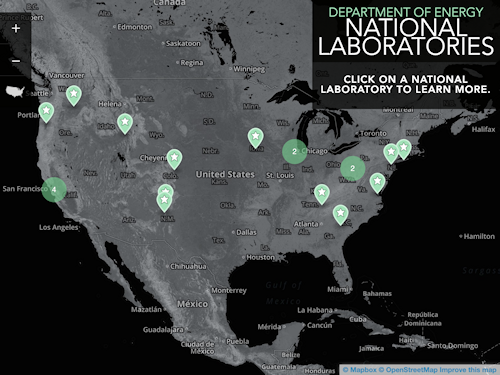 EEBA is grateful to have two of our National Laboratories as Alliance Partners. Their expertise and scientific innovation have benefited research around the country. But did you know that these two partners are part of a much larger group of 17 National Laboratories?
EEBA is grateful to have two of our National Laboratories as Alliance Partners. Their expertise and scientific innovation have benefited research around the country. But did you know that these two partners are part of a much larger group of 17 National Laboratories?
The Department of Energy’s National Labs have been around for more than seventy years as a result of the U.S. Government heavily investing in scientific research during World War II. They each address large-scale, complex research and development challenges placing an emphasis on “translating basic science into innovation.”
Some of the National Labs have supercomputers they use to model and simulate complex, dynamic systems that would be too expensive, impractical or impossible to physically demonstrate enabling scientists to explore renewable energy, weather forecasting, biological systems, as well as the evolution of the universe. Half of the fastest supercomputers in the world are located at National Laboratories. These high-performance computing systems are made “available to researchers from industry and academia so that these public investments in state-of-the-art technology are able to generate the greatest possible intellectual and economic benefit.”
The National Renewable Energy Laboratory (NREL), along with HP and Intel, developed the Peregrine supercomputer that is warm-water, liquid-cooled and is the primary source of building heat for NREL’s Energy Systems Integration Facility offices and laboratories.
Using the power of supercomputing, the Los Alamos National Laboratory is studying wildfire behavior.
Here’s a little more about each Laboratory: